- Learning time
- 30 minutes
- First play time
- 80 minutes
Azul: Stained Glass of Sintra
Designed by: Michael Kiesling
Taking its cue from the original Azul, Stained Glass of Sintra (from the same designer) has a similar flavour, but a rather different implementation. In the original game you are mosaic artists; here you are glaziers. In both games the theme is almost an irrelevance: this is an abstract game, really, albeit one with more than a modicum of interaction.
At the start of each round, different-coloured glass pieces are placed in a circle of factory floor tiles, and on your turn you choose a factory and take all of the tiles of a single colour on it. Any glass left over slides into middle of the circle, which effectively becomes a new factory once there are any tiles present. You can take from the centre, but the first person to do so is hit with a penalty point. On the other hand, taking this penalty does also mean you’ll start first in the next round, which can be advantageous…
With the glass you’re constructing windows, so let’s look at those. Everyone has their own series of column-shaped windows in front of them, aligned into a row. You also have a single worker piece representing your glazier – you can only work on one window at a time, so when you take glass pieces you have to make sure the glazier is present in a window where they’re needed – but the glazier will only move from left to right, so once it’s reached your right-most window, it costs you a turn to move it back to a window of your choosing – ideally, the left-most, so you maximise the opportunities to glaze before returning the worker to the start again! Beware also that taking tiles you cannot actually fit into a window, discarding them instead, carries penalties – potentially rather punitive ones, knocking you back down the score track.
Your goal, then, is to glaze all of your windows. Once a window is fully glazed it scores points – we’ll come to how momentarily – and the window is emptied and flipped over, giving you a new glazing challenge. Once the second side is completed, that window is removed from the game.
Timing is everything in Sintra, because how much a window scores depends on what colour glass it has, and the round in which you complete it. At the start of the game tiles are randomly assigned to each round denoting the bonus for scoring that colour at that time, so for example a potential haul of points in round three, if missed, could then score you a pittance in any subsequent rounds. There’s also some end-game scoring depending on how many windows you completed, which is also tracked in front of you: a completed window fills a space on your board, and adjacently-filled spaces score points – the more adjacent the better. After a set number of rounds the glazier with the most points is the winner!
The guru's verdict
-
Take That!
Take That!
There are certainly opportunities to play combatively - sometimes by taking a sub-optimal move for themselves, a player can force a terribly costly one on opponents.
-
Fidget Factor!
Fidget Factor!
Low to moderate, depending on the game state, which can change from 'it's obvious' to 'what the hell do I do here' and back again in quick succession.
-
Brain Burn!
Brain Burn!
Although the rules will only take a play or two to feel familiar, each play is a real a juggle between a number of things: where your worker is, where the tiles you need are, what colours score best this round, what end-game bonuses you might be able to help with, and - not least - what opportunities you're handing to your opponents.
-
Again Again!
Again Again!
Azul's experience doesn't change a huge amount from game to game, but the results can't be predicted, with the factories and windows guaranteeing a degree of randomness. But the principle changing factor from game to game is the players themselves, and the decisions they make.





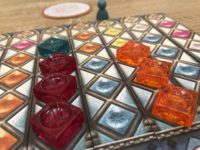
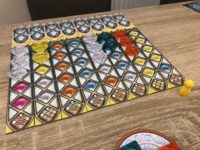
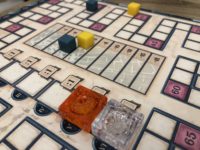


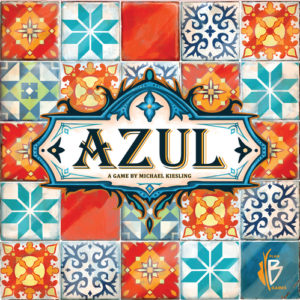

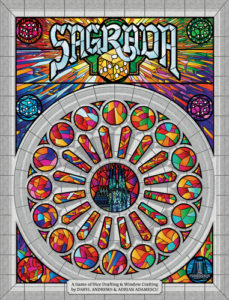


Sam says
I knew I'd like Sintra, and I did. Designer Michael Kiesling doesn't toss out half-baked games and his somewhat bonkers Heaven and Ale is one of my favourites. So Azul. Like the other design the original inspired though, Sintra felt to me very much a variation rather than new ground. Which isn't necessarily a bad thing, but what I liked about the original Azul was its very simple rules and yet deep decision-space in terms of implementation. Sintra has a similarly clever thing going on, but the extra spinning wheels of bonuses for completed windows and windows flipping and a worker trundling around all felt like - in comparison - excess. Clever and well-designed excess, for sure, and there'll be many who prefer Sintra for the extra complexity. I'd happily play it again, but it doesn't oust its predecessor from my top recommend of the three.